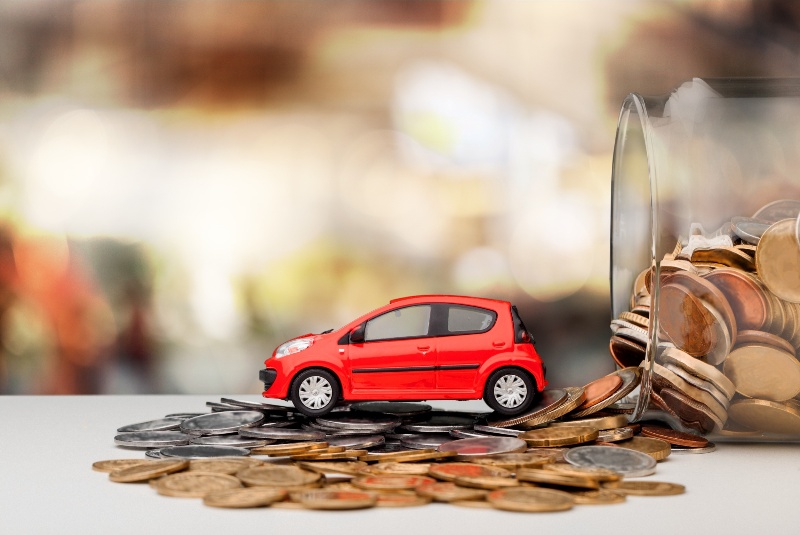Life doesn’t always go according to plan. A sudden car repair, an unexpected medical bill, or even losing your job can destabilize your finances in an instant. Without a financial safety net, these surprises can lead to debt, stress, and long-term setbacks. That’s where an emergency fund comes in—a dedicated pool of money meant solely for unexpected expenses. Building one from scratch might feel daunting, but with practical steps and steady effort, you can create a strong financial cushion.
Why an Emergency Fund Is Non-Negotiable
An emergency fund isn’t just a nice-to-have—it’s the foundation of financial security. Many households live paycheck to paycheck, leaving them vulnerable to any sudden cost. Without savings, you may be forced to turn to credit cards, payday loans, or borrowing from family, which often creates additional stress.
Having an emergency fund provides peace of mind. Knowing you have money available when life throws a curveball gives you confidence to make decisions without panic. Financial experts suggest saving enough to cover at least three to six months of living expenses. But if that feels overwhelming, even a modest $500 to $1,000 starter fund can keep you afloat during smaller emergencies.
Step 1: Decide How Much You Need
Start by defining your goal. Ask yourself: How much would I need each month to cover essential expenses if my income stopped? This includes:
-
Rent or mortgage
-
Utilities
-
Food and groceries
-
Transportation costs
-
Insurance and healthcare
Once you have your monthly baseline, multiply it by three to six. That’s your ultimate target. If the number looks intimidating, don’t worry—focus first on smaller milestones. Your first $1,000 saved is a powerful achievement that proves you can do it.
Step 2: Create a Dedicated Account
Keeping your emergency fund separate from your everyday spending account is critical. If the money is mixed in with your checking account, it becomes too tempting to spend. Open a high-yield savings account with no monthly fees. Many online banks offer better interest rates than traditional banks, which helps your fund grow passively.
A dedicated account also provides mental clarity. You’ll always know that this money is for emergencies, not for vacations, gadgets, or impulse buys.
Step 3: Understand Your Spending Habits
You can’t save effectively unless you know where your money is going. Review your last two to three months of expenses. Break them into categories like housing, food, transportation, entertainment, and debt payments.
Then identify areas to trim. You might realize you’re spending $200 a month on takeout or paying for subscriptions you no longer use. Even a few small adjustments—cutting one coffee shop trip per week or switching to a cheaper phone plan—can free up funds to redirect into savings.
Step 4: Make Saving Automatic
Willpower fades, but automation makes saving effortless. Set up a recurring transfer from your checking to your emergency fund every payday. Treat it as a fixed bill, just like rent or utilities.
For example, saving $50 a week adds up to $2,600 in a year. If $50 feels too high, start with $10 or $20. The habit matters more than the amount. Over time, you can increase your contributions as your financial situation improves.
Step 5: Supplement With Extra Income
If your budget feels too tight, look for ways to earn more. Even temporary boosts in income can accelerate your progress. Consider:
-
Freelancing or part-time gigs (tutoring, driving, delivery apps)
-
Selling unused items online
-
Offering services like babysitting, pet sitting, or yard work
-
Turning a hobby into a small side hustle
Whenever you earn extra money, channel it directly into your emergency fund. Think of this income as “bonus fuel” for your financial safety net.
Step 6: Save Unexpected Cash
Tax refunds, work bonuses, or even birthday gifts can dramatically speed up your savings journey. Instead of splurging, deposit a portion—or ideally all—into your emergency fund.
This approach allows you to make significant leaps without disrupting your regular budget. For many people, these occasional windfalls are the quickest path to reaching their first $1,000 goal.
Step 7: Know What Counts as an Emergency
One of the biggest challenges isn’t just saving, but resisting the urge to dip into your fund for the wrong reasons. A true emergency includes:
-
Sudden job loss or reduced hours
-
Unexpected medical expenses
-
Urgent car or home repairs
-
Emergency travel for family matters
It does not include vacations, holiday shopping, or upgrading your phone. By setting clear rules in advance, you’ll protect your savings for when you truly need them.
Step 8: Replenish After Use
The reality is that you will eventually use your emergency fund—and that’s perfectly fine. The key is to rebuild it as soon as possible afterward. Return to your original savings plan and prioritize replacing what you spent.
Think of your emergency fund like a protective shield. It may take a hit, but with consistent effort, it can always be restored.
Step 9: Keep Motivated With Milestones
Saving money can feel slow, especially when you’re juggling other financial priorities. That’s why it helps to celebrate milestones. Whether it’s your first $100, your first $1,000, or a full month of expenses saved, acknowledge the achievement.
Celebrate with small, inexpensive rewards—a movie night at home, cooking a special dinner, or simply reflecting on your progress. Recognizing your wins builds motivation and keeps you going.
Step 10: Grow Beyond the Basics
Once you’ve reached your emergency fund goal, you can turn your focus to other financial priorities, such as retirement, paying off debt, or investing. But your emergency fund should remain untouched except for true crises.
Think of it as the foundation of your financial house. Without it, the structure above—your long-term savings and investments—is always at risk of collapsing when unexpected expenses hit.
Common Mistakes to Avoid
While building your fund, watch out for these pitfalls:
-
Saving too aggressively at first and burning out. Start small and increase gradually.
-
Mixing emergency funds with checking accounts. Easy access often leads to unnecessary spending.
-
Using it for predictable costs. Annual car insurance renewals or holiday shopping should be part of your budget, not emergencies.
-
Neglecting to rebuild after use. Don’t let one withdrawal permanently shrink your safety net.
Building an emergency fund from scratch isn’t about overnight success. It’s about small, steady steps that create lasting security. Define your goal, separate your savings, automate contributions, and use windfalls wisely. Stay disciplined, and over time, the money will grow into a powerful shield against life’s surprises.
With patience and persistence, you’ll gain more than just financial stability—you’ll gain peace of mind, knowing you’re prepared for whatever comes next.




